The first step in fairway-bunker play: Clearing the lip
The first step in fairway-bunker play: Clearing the lip
By Scott Chisholm
You’ve run down the fairway-bunker checklist in your head—take an extra club, dig into the sand with your feet, grip down on the handle, aim a little right of the target—all the things you’ve been told that will help execute this shot. You’re confident this is going to work out, and you make a swing that reflects that self-assurance.
What happens next? Thud. Your ball smacks into the lip of the bunker and rolls back into the sand. So much for best-laid plans. Though I applaud the analytical approach to escaping fairway bunkers, you can’t ignore the first step—which is to clear the lip!
If you find it difficult to get out of fairway bunkers in one shot, I’ve got two options for you, and you’re not going to like the first one. You can simply take your sand wedge or lob wedge and play back into the fairway like it’s a greenside-bunker shot. (See? I knew you wouldn’t like that option.)
Your other choice is to take a longer club and try to reach the green, but you need to adjust your swing. The reason you’re hitting the lip is probably because you’re swinging down into the ball on too steep an angle. The steeper the downswing, the lower the ball will fly. I’m guessing you’re doing this because you’ve been told that ball-first contact is crucial to this shot—especially if you hope to reach the green in regulation. But to clear the lip, you have to come into the ball on a shallower approach. Ball-first contact still applies, but try to swing into the ball from inside the target line. That will take some steepness out of your downswing and deliver the original loft of the club as it strikes the ball. Unlike a shot from the fairway, you don’t want your golf shaft leaning toward the target at impact. Too much shaft lean is going to make the ball fly lower.
So here comes the part where I tell you how to clear the lip and reach the green. You know, the “gimme one thing” tip. I want you to think about your lead leg (left for right-handers) matching the position of the club’s shaft at impact. And that position should be as straight up and down as possible.
Essentially, you’re trying to post up on that lead leg during the downswing, which will let the club’s shaft return to the ball in that ideal upright position. This is crucial to striking the ball with enough loft so it doesn’t carom off the lip, and with enough force to reach the green.
Think, leg straight, shaft vertical—and you’ll stripe it.—with Ron Kaspriske
SCOTT CHISHOLM is a Golf Digest Best Young Teacher based at Rolling Green Golf Club in Springfield, Pa.
Source here


